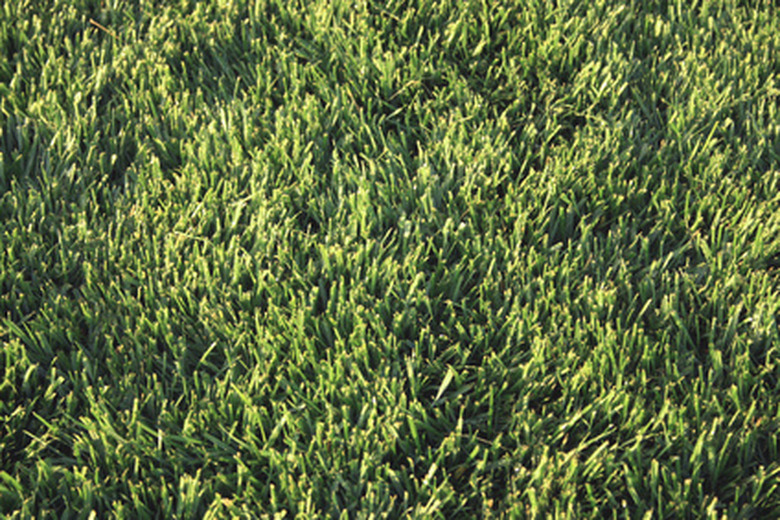How To Grow Grass In Massachusetts
Massachusetts is in hardiness zones 4b to 7a, with winter lows varying from -25 to 0 Fahrenheit. According to Outside Pride, the best grasses for use in Massachusetts are ryegrass, fine fescue and bluegrass. Some homeowners use zoysia grass, though this turns brown six months of the year in Massachusetts. Plant grass seed in the spring when the ground can be worked. Irrigate grass in the hot humid summers to keep it green.
Step 1
Take lawn furniture, barbecue equipment or other large objects off your lawn. Leaving them on the lawn means your grass seed won't grow beneath them, creating a patchy lawn.
- Massachusetts is in hardiness zones 4b to 7a, with winter lows varying from -25 to 0 Fahrenheit.
- Leaving them on the lawn means your grass seed won't grow beneath them, creating a patchy lawn.
Step 2
Mow your lawn as short as possible using a lawnmower. If you have no existing lawn, skip this step.
Step 3
Even out the grade of your lawn by adding topsoil to valleys. You can create a hill in this manner, too.
Step 4
Rake bare patches on your lawn using a hand rake. Loosen the top 1/4 inch of soil so your new grass seed can sprout.
Step 5
Scatter a grass seed recommended for planting in Massachusetts across your lawn by hand or by using a mechanical spreader. If you don't have a mechanical spreader you can rent one at a home improvement or rental center. Apply 16 grass seeds per inch, as Greenview Fertilizer recommends.
- Mow your lawn as short as possible using a lawnmower.
- Scatter a grass seed recommended for planting in Massachusetts across your lawn by hand or by using a mechanical spreader.
Step 6
Cover the grass seed with 1/4 inch of soil only if you've planted over a bare lawn. Grass seed sown on an existing lawn doesn't need a cover, since the grass keeps it from blowing away.
Step 7
Water your newly planted grass seed until the ground becomes moist, but not saturated. Continue to water every day until the ground becomes moist; discontinue watering when the grass is 2 inches tall.
Grow Grass?
All cool-season grasses can be grown from seed. Cool-season grasses don't grow much during the summer. Warm-season grasses, such as Bermuda grass, Zoysia grass and St, Augustine grass, are traditionally grown from sprigs or plugs, although some varieties can also be grown from seed. The best time to plant sprigs or plugs is early spring. To establish a successful sod lawn, use freshly dug sod and water once a day for six weeks, depending on weather conditions. Because warm-season grasses turn brown during winter, over-seeding with a cool-season grass in fall can keep the lawn looking green longer.
- Cover the grass seed with 1/4 inch of soil only if you've planted over a bare lawn.
- Grass seed sown on an existing lawn doesn't need a cover, since the grass keeps it from blowing away.
Things Needed
- Lawnmower
- Topsoil
- Rake
- Grass seed
- Mechanical spreader (optional)
References
- Greenview Fertilizer: How to Plant Grass Seed
- University of California Statewide Integrated Pest Management Program: Seasonal Growth Pattern of Grasses
- This Old House: When to Plant Grass Seed
- The Connecticut Agricultural Experiment Station: Starting a New Lawn
- University of California Statewide Integrated Pest Management Program: Overseeding Your Lawn
